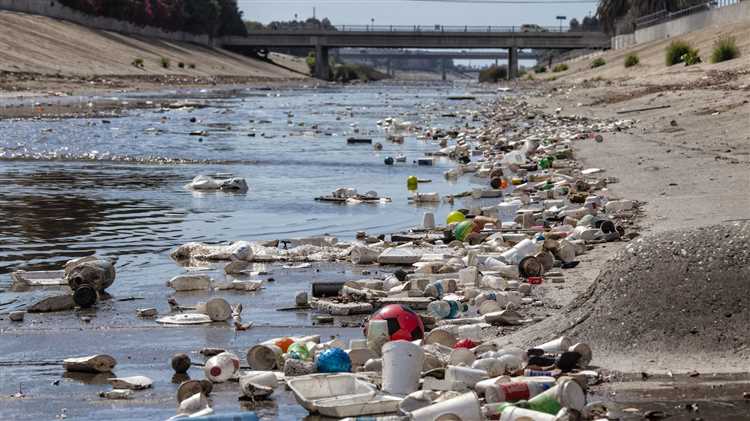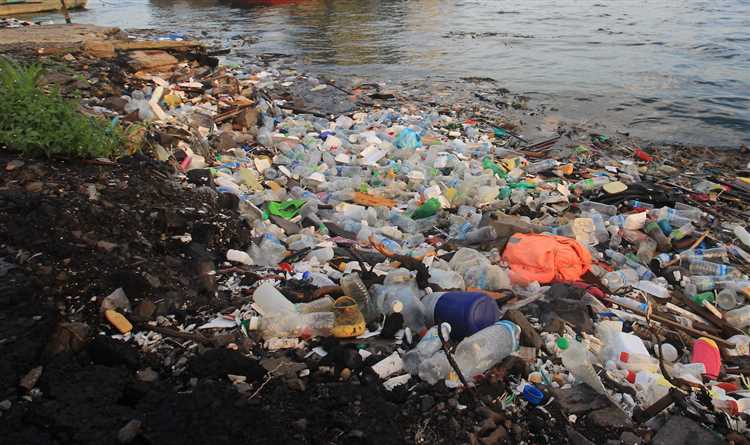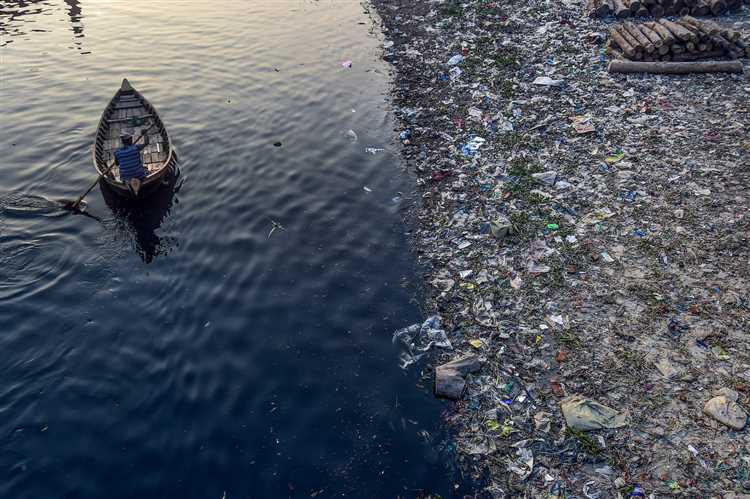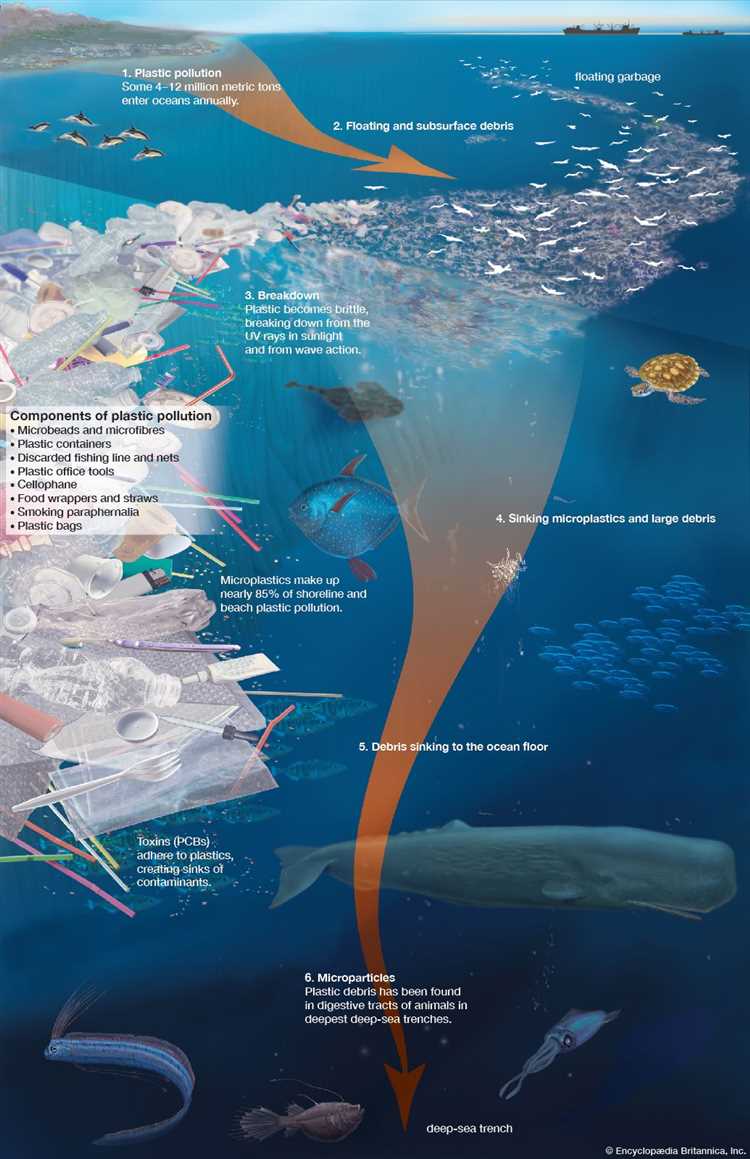
Plastic, once hailed as a revolutionary material, has become one of the biggest environmental concerns of our time. Its ubiquity in our daily lives and its irresolvable nature have led to an alarming accumulation of plastic waste, causing tremendous harm to our planet.
Plastic was first introduced in the early 20th century as a miraculous substance that could be molded into any shape and replace traditional materials like wood, metal, and glass. Its durability, flexibility, and low cost made it an instant success. However, as plastic production skyrocketed over the years, so did the negative consequences.
One of the most pressing issues with plastic is its inability to biodegrade. Unlike organic materials, such as paper or food, plastic stays in the environment for hundreds of years, slowly breaking down into smaller and smaller fragments known as microplastics. These tiny particles contaminate our oceans, soil, and even the air we breathe. The long lifespan of plastic means that almost every piece of plastic ever created still exists in some form today.
- The Origins of Plastic Pollution
- From Invention to Mass Production
- The Rise of Single-Use Plastics
- Contributing Factors
- Environmental Impact
- The Environmental Consequences
- Pollution of Land and Water
- Impact on Wildlife and Ecosystems
- The Global Scale of Plastic Pollution
- Social and Economic Impacts
- undefined
- What is the impact of plastic on the environment?
- How did plastic become a global problem?
- What are the solutions to the plastic problem?
- How does plastic pollution affect marine life?
- What are the long-term consequences of plastic pollution?
- What is the impact of plastic pollution?
- How did plastic become a global problem?
The Origins of Plastic Pollution
Plastic pollution is a global problem that has its roots in the mass production and consumption of plastic in the 20th century. The origins of plastic pollution can be traced back to the invention and widespread adoption of synthetic polymers in the early 1900s.
In 1907, Leo Hendrik Baekeland created the first fully synthetic plastic, called Bakelite. This marked the beginning of the modern plastics industry. Bakelite was initially used for electrical insulators and other industrial purposes, but its durability and versatility soon led to its use in countless consumer products.
The popularity of plastic exploded in the mid-20th century, fueled by its low cost, durability, and ability to be molded into any shape. Plastics started to replace natural materials like wood, glass, and metal in a wide range of applications, from packaging to construction to automotive parts.
However, the widespread use and disposal of plastic products also brought about serious environmental consequences. Plastics are not biodegradable, meaning they do not break down naturally over time. Instead, they break down into smaller pieces called microplastics, which can persist in the environment for hundreds of years.
The plastic pollution crisis escalated in the 1950s with the advent of single-use plastics, such as plastic bags, disposable cups, and food wrappers. The convenience and affordability of these products led to their widespread use and discard, resulting in enormous amounts of plastic waste entering our oceans, landfills, and ecosystems.
Today, plastic pollution is a global concern, with an estimated 8 million metric tons of plastic entering the world’s oceans every year. The impacts of plastic pollution are far-reaching, affecting marine life, ecosystems, and human health. Efforts are underway to reduce plastic waste and promote more sustainable alternatives, but it remains a complex and ongoing challenge.
From Invention to Mass Production

The invention of plastic can be traced back to the 19th century when a chemist named Alexander Parkes first presented a material called celluloid at the Great Exhibition in London in 1862. Celluloid, derived from cellulose, was the first synthetic polymer and marked the beginning of the era of plastic.
However, it wasn’t until the early 20th century that plastic started being mass-produced. In 1907, Leo Hendrik Baekeland invented Bakelite, the first fully synthetic plastic that could be molded into various forms and was highly durable. This breakthrough led to a rapid increase in the production of plastics across industries.
The mass production of plastic gained momentum during World War II when it became an essential material for military applications. Plastic was used in the production of aircraft components, parachutes, and other military equipment. After the war, with the development of new technologies and techniques, plastic production continued to grow, fueled by its versatility and low cost.
The 1950s marked the beginning of the disposable plastic revolution. Single-use plastic items such as plastic bags, bottles, and packaging materials became popular due to their convenience and affordability. The introduction of new types of plastics like polyethylene and polypropylene further expanded the range of applications and increased the demand for plastic products.
As plastic production soared, so did its impact on the environment. Plastic waste became a global problem as the disposal and recycling infrastructure failed to keep up with the growing volume of plastic being produced. The durability and resistance of plastic also meant that it lingered in the environment for hundreds of years, polluting land, water, and air.
Today, plastic has become an integral part of our daily lives, with over 380 million tons being produced every year. While plastic offers many benefits and innovations, such as improving food safety and enabling technological advancements, its impact on the environment and wildlife cannot be ignored.
Efforts are now being made to reduce our dependence on single-use plastics and promote recycling and alternative materials. It is crucial that we find sustainable solutions to deal with the plastic waste problem and ensure a healthier and cleaner planet for future generations.
The Rise of Single-Use Plastics
In recent years, there has been a significant increase in the production and consumption of single-use plastics worldwide. These plastics are designed to be used only once before being discarded, contributing to the growing problem of plastic waste and pollution.
Single-use plastics come in various forms, including plastic bags, straws, bottles, packaging, and other disposable items. The convenience and affordability of these products have contributed to their widespread adoption, but their impact on the environment is becoming increasingly evident.
Contributing Factors
Several factors have contributed to the rise of single-use plastics:
- Consumer demand: The convenience of single-use plastics has made them popular among consumers, who often prioritize convenience and affordability over sustainability.
- Manufacturing practices: The production of single-use plastics is relatively inexpensive and profitable, leading to their mass production and widespread availability.
- Marketing and advertising: Companies heavily promote single-use plastic products, creating a culture of consumption and disposability.
Environmental Impact

The proliferation of single-use plastics has had severe consequences for the environment:
| Issue | Impact |
|---|---|
| Plastic waste | Single-use plastics contribute to the massive amount of plastic waste that ends up in landfills, oceans, and ecosystems. |
| Pollution | Plastic products take hundreds of years to decompose, releasing toxic chemicals into the environment. |
| Wildlife harm | Marine animals often mistake single-use plastics for food, leading to ingestion and entanglement, which can be fatal. |
| Microplastics | Single-use plastics break down into smaller pieces over time, creating microplastics that can enter the food chain and have unknown health impacts. |
Efforts are being made globally to address the issue of single-use plastics, including the implementation of plastic bag bans, the promotion of reusable alternatives, and the development of biodegradable materials. However, changing consumer behavior and reducing the reliance on single-use plastics will require a collective effort from individuals, businesses, and governments.
The Environmental Consequences
Plastic pollution has emerged as one of the most pressing environmental issues of our time. The consequences of plastic on the environment are far-reaching and devastating.
One of the most immediate impacts of plastic pollution is on aquatic ecosystems. Plastic waste finds its way into rivers, lakes, and oceans, where it poses a serious threat to marine life. Sea turtles, dolphins, seals, and countless other marine animals mistake plastic for food or become entangled in plastic debris, leading to injury and death. Additionally, plastic pollution disrupts the delicate balance of marine ecosystems, affecting the entire food chain.
Plastic waste also has detrimental effects on terrestrial ecosystems. As plastic particles degrade, they release harmful chemicals into the soil, contaminating it and disrupting the vital processes of plant growth. This not only affects the health of plants but also the organisms that depend on them, such as insects and small animals. Furthermore, the accumulation of plastic in landfills and open spaces contributes to the destruction of natural habitats and landscapes.
Another significant consequence of plastic pollution is its impact on human health. Plastic contains toxic chemicals that can leach out into the environment and contaminate water, food, and air. These chemicals have been linked to numerous health issues, including hormonal disruptions, reproductive problems, and an increased risk of certain cancers. The widespread use and improper disposal of plastic have exposed communities around the world to these health risks.
The environmental consequences of plastic pollution call for urgent action. Efforts to reduce plastic waste, promote recycling, and find sustainable alternatives are crucial in mitigating the impact on ecosystems and human health. By raising awareness, implementing stricter regulations, and embracing a circular economy approach, we can work towards a future where plastic no longer poses a threat to the environment.
Pollution of Land and Water
Plastic waste is causing significant pollution of land and water environments worldwide. The improper disposal and poor management of plastic waste have led to the accumulation of plastic in natural ecosystems, resulting in severe ecological and environmental consequences.
Plastics take hundreds of years to degrade, and as a result, they accumulate in soils and bodies of water, polluting the land and water resources. The presence of plastic waste in the environment poses numerous threats to wildlife, including entanglement and ingestion.
Plastic pollution in land and water ecosystems disrupts the natural balance, causing harm to plants and animals. Microplastics, which are tiny plastic particles, can be ingested by microorganisms, fish, and other marine organisms, leading to bioaccumulation and biomagnification of harmful chemicals.
The pollution of land and water with plastic waste also affects human health and wellbeing. Microplastics can enter the food chain, and studies have shown that they are present in seafood and even tap water. The long-term effects of plastic pollution on human health are still being researched, but concerns about potential adverse effects are increasing.
Efforts to address plastic pollution include waste management solutions, such as recycling and proper disposal, as well as reducing plastic consumption and promoting alternative materials. Awareness campaigns and legislation are also crucial in raising awareness and encouraging responsible behavior towards plastic use and disposal.
Overall, the pollution of land and water due to plastic waste has become a global problem with far-reaching consequences for ecosystems and human health. It is essential to take immediate action to mitigate and prevent further damage from plastic pollution.
Impact on Wildlife and Ecosystems

The impact of plastic on wildlife and ecosystems is one of the most concerning aspects of this global problem. The use and disposal of plastic has led to devastating consequences for a wide range of species and their habitats.
Plastic pollution poses a serious threat to marine life. Discarded plastic waste often ends up in the oceans, where it can entangle marine animals such as turtles, seals, and seabirds. These animals may become trapped in plastic debris, leading to injury, suffocation, or even death. Ingestion of plastic is another common issue faced by marine life. Marine animals mistakenly consume plastic debris, mistaking it for food. This can lead to blocked digestive tracts, internal injuries, and a lack of nutrition, which ultimately results in malnutrition and sometimes death.
Land-dwelling animals are also affected by plastic pollution. Birds, rodents, and other animals often mistake plastic items for food or nesting materials. Consuming plastic can have detrimental effects on their health, causing digestive issues, nutrient deficiencies, and organ damage. Additionally, plastic waste can alter the behavior of animals, leading to changes in feeding patterns, migration routes, and mating habits.
The impact of plastic on ecosystems extends beyond individual animals. Plastic pollution can disrupt the delicate balance of ecosystems by contaminating soil, water sources, and food chains. By infiltrating habitats, plastic debris can negatively affect the growth, reproduction, and survival of plants and animals. Microplastics, which are tiny particles of plastic, are especially problematic as they can be absorbed by organisms and pass through the food chain, potentially affecting entire ecosystems.
Efforts to mitigate the impact of plastic on wildlife and ecosystems have become a global priority. Conservation organizations, governments, and individuals are working towards reducing plastic waste, implementing stricter regulations, and promoting sustainable alternatives. Education and awareness campaigns also play a crucial role in reducing plastic pollution and protecting wildlife and ecosystems.
In conclusion, the impact of plastic on wildlife and ecosystems cannot be understated. From entanglement and ingestion to altering behavior and disrupting ecosystems, plastic pollution poses significant threats to the survival of countless species. It is imperative that we take immediate action to address this global problem and protect the fragile balance of our natural world.
The Global Scale of Plastic Pollution
Plastic pollution is a global environmental crisis that affects every corner of the world. The scale of the problem is truly staggering and continues to grow exponentially.
Currently, it is estimated that over 8 million tons of plastic enter the ocean each year. This plastic waste comes from a variety of sources, including single-use items like plastic bags, bottles, and straws, as well as microplastics from larger plastic items that have broken down over time.
In addition to polluting our oceans, plastic waste also contaminates our land. Landfills around the world are overflowing with plastic, and much of it is not biodegradable, meaning it will remain in the environment for hundreds of years.
Furthermore, plastic pollution has a devastating impact on wildlife. Marine animals, such as seabirds, turtles, and dolphins, often mistake plastic for food and end up consuming it. This can lead to internal injuries, starvation, and even death. Additionally, plastic waste can entangle marine animals, making it difficult for them to move, eat, and reproduce.
The problem of plastic pollution is not limited to the oceans. Microplastics have been found in the air we breathe, the water we drink, and even the food we eat. This means that humans are also being exposed to the harmful effects of plastic pollution.
Addressing the global scale of plastic pollution requires collective action from individuals, governments, and businesses. It involves reducing plastic consumption, improving waste management systems, and promoting recycling and the use of sustainable alternatives.
In conclusion, the global scale of plastic pollution is a pressing issue that demands immediate attention. It is crucial that we take action to reduce our plastic footprint and protect the planet for future generations.
Social and Economic Impacts
The impact of plastic pollution goes beyond just environmental concerns. It also has far-reaching social and economic impacts.
On a social level, plastic pollution affects human health and well-being. Plastic waste can contaminate water sources, leading to the spread of diseases and harming aquatic life. Ingestion of plastic particles by marine animals can disrupt their feeding and reproductive patterns, which not only affects the ecological balance but also impacts the livelihoods and food security of communities that rely on fishing and marine resources.
Plastic pollution also contributes to aesthetic degradation of landscapes, including beaches, parks, and urban areas. This can negatively affect tourism, as visitors are less likely to be attracted to areas with high levels of plastic pollution. In turn, this can have significant economic consequences for local communities that depend on tourism as a source of income and employment.
From an economic perspective, plastic pollution leads to substantial financial costs. The cleanup and management of plastic waste require significant resources, including manpower, equipment, and infrastructure. These costs are often borne by governments and taxpayers. Additionally, the negative impacts on industries such as fishing, tourism, and agriculture can result in economic losses and reduced productivity.
The social and economic impacts of plastic pollution highlight the need for concerted efforts to address this global problem. Governments, industries, and individuals all have a role to play in reducing plastic consumption, improving waste management systems, and promoting sustainable alternatives to plastic.
undefined
What is the impact of plastic on the environment?
Plastic has a significant impact on the environment. It is a major contributor to pollution, as it takes hundreds of years to decompose. Plastic waste ends up in landfills or, even worse, in our oceans and waterways, where it harms wildlife and ecosystems. The production of plastic also relies on fossil fuels, contributing to greenhouse gas emissions and climate change.
How did plastic become a global problem?
Plastic became a global problem due to its durability, convenience, and low cost. These factors led to the widespread use and disposal of plastic products, resulting in massive amounts of plastic waste. Inadequate waste management systems and improper disposal methods contributed to the problem, as much of the plastic ends up in the environment rather than being recycled or properly managed.
What are the solutions to the plastic problem?
There are several solutions to the plastic problem. Firstly, reducing the use of single-use plastic products can make a significant impact. Governments and businesses can implement policies to encourage the use of alternatives and promote recycling. Individuals can also make a difference by choosing reusable alternatives and practicing proper waste management, including recycling and reducing plastic consumption.
How does plastic pollution affect marine life?
Plastic pollution has a devastating impact on marine life. Marine animals can easily mistake plastic for food and ingest it, leading to internal injuries, starvation, and death. Turtles, birds, and marine mammals often get entangled in plastic debris, suffocating or becoming severely injured. The presence of plastic in the ocean disrupts ecosystems and threatens the balance of marine biodiversity.
What are the long-term consequences of plastic pollution?
The long-term consequences of plastic pollution are alarming. Plastic particles are entering the food chain, as they are consumed by marine organisms and can eventually end up on our plates. The chemicals present in plastic can leach into the environment, posing potential health risks to humans and wildlife. The accumulation of plastic waste also poses challenges in terms of waste management, as it takes up valuable land and resources.
What is the impact of plastic pollution?
Plastic pollution has a significant impact on the environment. It contaminates the oceans, leading to the death of marine life and the destruction of ecosystems. Plastic waste also contributes to air pollution when it is burned, releasing harmful toxins into the atmosphere. Additionally, plastic pollution poses a threat to human health, as microplastics can enter the food chain and accumulate in our bodies.
How did plastic become a global problem?
Plastic became a global problem due to its widespread production and improper disposal. The convenience and affordability of plastic products led to their increased usage, resulting in massive amounts of plastic waste being generated. Unfortunately, many countries lack proper waste management systems, causing plastic to end up in landfills, rivers, and oceans. The global nature of plastic pollution is further exacerbated by the fact that plastic debris can travel long distances through ocean currents.